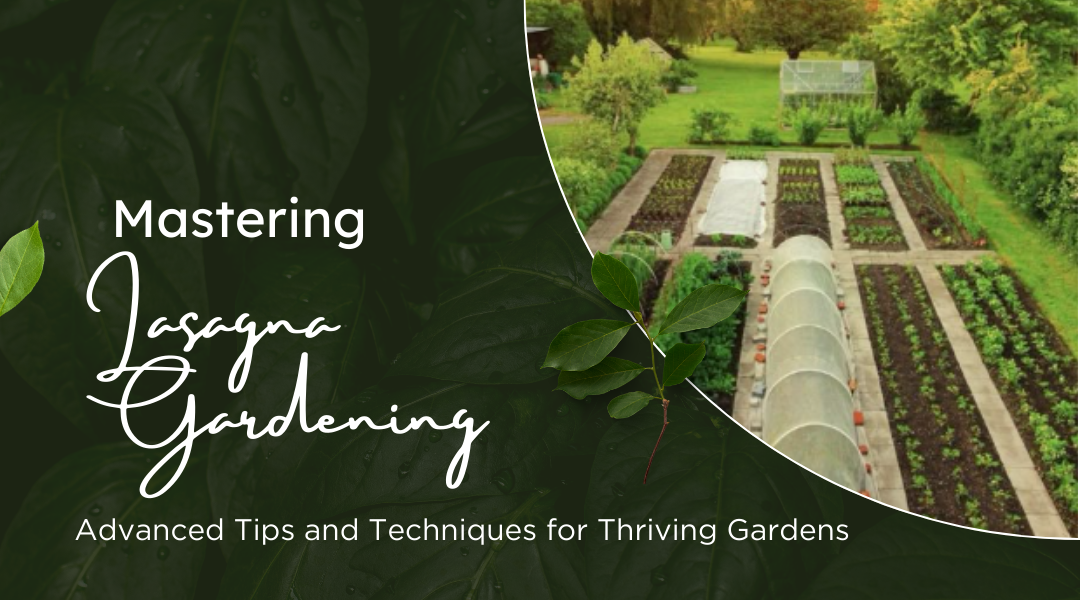Once you’ve built your first lasagna garden, you’ll quickly discover that the basics are just the starting point. There’s a wealth of strategies and creative techniques that can elevate your garden’s productivity, speed up decomposition, and keep your plants flourishing year-round. This guide dives into advanced layering methods, innovative materials, seasonal strategies, and sustainable practices to help you get the most out of your lasagna garden.
Seasonal Layering: Maximizing Your Garden Throughout the Year
One of the greatest advantages of lasagna gardening is its flexibility. With thoughtful layering, your garden can produce crops in spring and summer, and continue building fertile soil through fall and winter. Adjusting your layers according to the season can enhance decomposition and soil health.
Spring and Summer: Fueling Rapid Growth
During the growing months, your goal is to provide rich nutrients for fast-growing vegetables and herbs. Use a mix of compost, well-aged manure, grass clippings, and cardboard. The compost and manure feed plants with essential nutrients, while cardboard suppresses weeds and retains moisture.
Pro Tip: Boost microbial activity with compost tea or worm castings. Simply steep a bucket of finished compost in water for 24 hours and sprinkle it over your layers to introduce beneficial microbes. This accelerates nutrient availability for your plants.
Fall and Winter: Building Long-Term Fertility
After harvest, focus on creating a strong foundation for the next season. Layer leaves, shredded paper, and cardboard to build slow-decomposing layers. These will continue breaking down over the cold months, enriching the soil for spring planting.
Pro Tip: Avoid disturbing the layers during winter. Let the decomposition process work naturally, while the organic layers insulate your soil and protect perennials or dormant roots from frost.
Research Insight: Studies in Horticulture Research highlight that slow winter decomposition encourages microbial diversity, helping soil retain nutrients and moisture for the following growing season.
Innovative Materials to Supercharge Your Layers
While standard lasagna layers work beautifully, experimenting with unconventional materials can enhance nutrient content and speed decomposition.
Coffee Grounds
Coffee grounds are packed with nitrogen, making them perfect for green layers. They also attract earthworms, which aerate soil and speed breakdown. Combine with crushed eggshells to provide calcium for your plants.
Biochar
Biochar is charcoal made from plant material at high temperatures with limited oxygen. Rich in carbon, it improves soil structure, enhances water retention, and helps nutrients stay available for plants. Activate it first by soaking in water or compost before adding to your layers.
Seaweed or Kelp
If you have access to the coast, seaweed or kelp adds trace minerals like magnesium, iodine, and calcium. Rinse thoroughly to remove salt, dry, and crush before layering. These nutrients boost plant health and soil fertility.
Verified Insight: Research confirms that seaweed amendments increase yields, improve soil moisture retention, and strengthen plant growth.
Integrating Permaculture Principles
Lasagna gardening pairs naturally with permaculture, creating sustainable, self-sufficient garden ecosystems.
Key Principles:
- Observe and Interact: Study your garden’s sunlight, water flow, and plant health to guide layering and planting decisions.
- Capture and Store Energy: Maximize the garden’s potential by collecting rainwater or incorporating composting systems to recycle nutrients.
- Use and Value Diversity: Mix vegetables, herbs, flowers, and companion plants to attract beneficial insects and pollinators.
- Small and Slow Solutions: Build layers gradually and allow decomposition to progress naturally. Avoid rushing the process.
Pro Tip: Create plant guilds—pair fruit trees with nitrogen-fixing plants (like peas or clover) and flowers that attract pollinators. This promotes soil health, biodiversity, and resilience.
Speeding Up Decomposition
Although lasagna gardens are low-maintenance, there are ways to accelerate the breakdown of materials:
- Compost Accelerators: Commercial accelerators or finished compost introduce active microbes to jumpstart decomposition.
- Shredding Materials: Chop cardboard, tear newspaper, or cut straw into small pieces. Finer materials decompose faster due to increased surface area.
- Maintain Moisture: Keep layers damp like a wrung-out sponge. Drip irrigation or soaker hoses help maintain consistent moisture without waterlogging.
Pro Tip: In dry climates, cover the garden lightly with straw or leaves to lock in moisture and prevent the layers from drying too quickly.
Conclusion: Take Your Lasagna Garden Further
Lasagna gardening is more than a simple layering technique—it’s a platform for creativity, experimentation, and sustainable growing. By fine-tuning your layers, incorporating innovative materials, applying permaculture principles, and strategically managing seasons, your garden can reach its full potential.
The key to success lies in observation, patience, and a willingness to experiment. Each layer you add, each new material you test, and each season you nurture brings you closer to a thriving, self-sustaining garden ecosystem.
With these advanced tips and techniques, your lasagna garden isn’t just growing—it’s evolving into a vibrant, resilient, and productive space that rewards care and creativity. Start layering, stay curious, and watch your garden flourish like never before.
